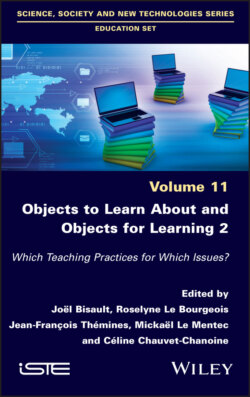Читать книгу Objects to Learn about and Objects for Learning 2 - Группа авторов - Страница 21
1.3. Points of reference in upper elementary curricula
ОглавлениеPoints of reference thus constitute an unavoidable component of learning geography, but they are specified inconsistently by the various official directives. A comparison of three sets of curricula is necessary for two superimposed reasons: first because the most recent provide no orientation or even list for determining the points of reference that are nevertheless required, and second because the very frequent changes in the curriculum do not aid the “slow infusion of geographical knowledge” (Baudinault 2017). Elementary school teachers do not have the time, the assistance or the perspective to absorb and interpret these changes; they struggle with the current curriculum, particularly with regard to the importance to be accorded to points of reference, and they do not change their habits easily. Table 1.1 shows these three curricula (2002, 2008 and 2015), which merit several comments.
The most general is that, despite paradigm shifts, particularly in the latest concerning “living”, which profoundly revitalizes the way of understanding the world, points of reference are still present, and they even set the boundaries for a strong competency organized around several elements: naming/describing or identifying/locating or situating. These terms are not neutral, and it is their complementarity that allows for the achievement of complete mastery of this vast skill, which is the “construction of geographical points of reference.” The study conducted in 2011 by the DEPP specifies with regard to elementary school that “the attribute or function of a place and the mastery of a specific lexicon results in higher grades than locating it on a map”. However, a 2008 assessment booklet by the same SCEREN network, called the “elementary school booklet” or the “blue booklet”, only includes a single skill for geography in upper elementary school: “Identify the primary features of the geography of France”: quite a vague heading given the lacunae observed in the study.
Another point relates to the degree of precision and imperativeness with which these points of reference are treated. While the 2002 and 2008 texts mention “primary points of reference”, the 2015 text mentions “major points of reference”. A priori, there is not much difference between these terms, as they can be interpreted to refer to the essential points of reference, those that are most important. Where things differ more clearly is in the use of definite or indefinite qualifiers for determining these points of reference. Each of the three texts includes clearly identifiable elements such as “the” oceans, countries, French-speaking regions, etc., with the support of specific lists (2002), but areas of vagueness can be seen in expressions such as “some” large cities (2002) and “some” spaces (2015) or the use of ellipses (list of large global cities in the 2002 text). While the three texts mention the points of reference to “know”, the 2008 curriculum intensifies the word by mentioning “indispensable” points of reference to be mastered, which can be complemented by other elements chosen by the teacher.
Table 1.1. Points of reference in upper elementary curricula for 2002, 2008 and 2015
Another point of analysis can be seen in the “World” table appended to this text: which map of the world is proposed by the legislation? The texts become less precise as time goes on. The 2002 curriculum is very detailed and does not hesitate to name seas, rivers, cities and locations. What we find there are more or less the cities of school culture (Clerc 2002). The role of the European Union appears clearly, with locations shown in a network. The 2008 text, which caused an uproar because of its archaic and Franco-centric nature (Roumégous and Clerc 2008; Leroux 2012), did not achieve its predecessor’s level of precision, but did provide groups of points of reference to be learned. In addition to the preceding physical elements (climate, relief), elements related to administrative divisions (countries of Europe, French departments and regions) were added. The current curriculum gives teachers a wide margin for maneuver by only specifying that these points of reference can be places or areas. It specifies that “geographical points of reference related to the curriculum should be memorized” and, in the introductory chapter, that “contextualization, putting the place being studied into relation with other places and with the world, provides the opportunity to continue work on major geographical points of reference”. If all this seems advantageous for learning the multi-scale method in support of the skill of “understanding the concept of geographical scale” that is also mentioned in the curriculum, the question of knowing which points of reference will actually be presented by teachers in their classrooms remains open.
